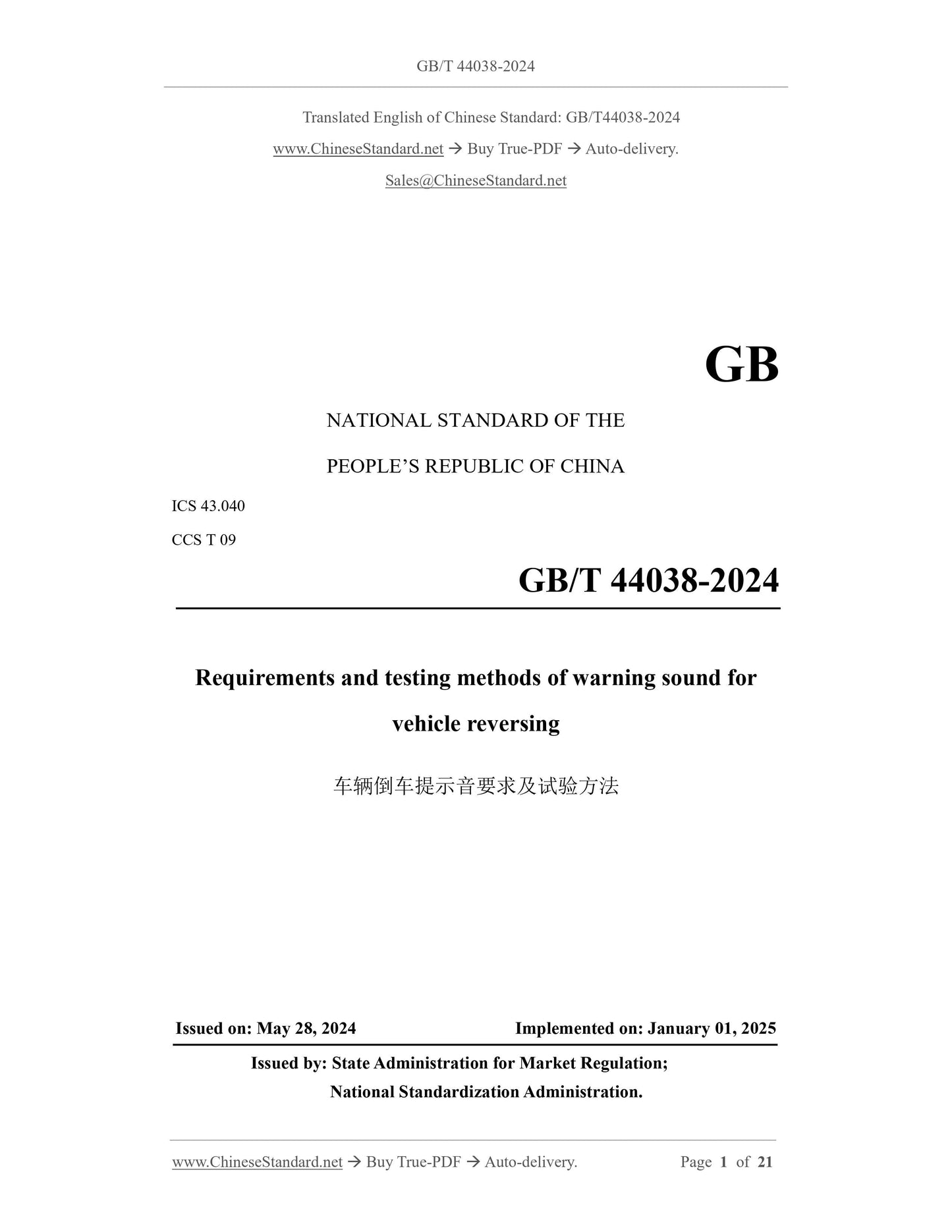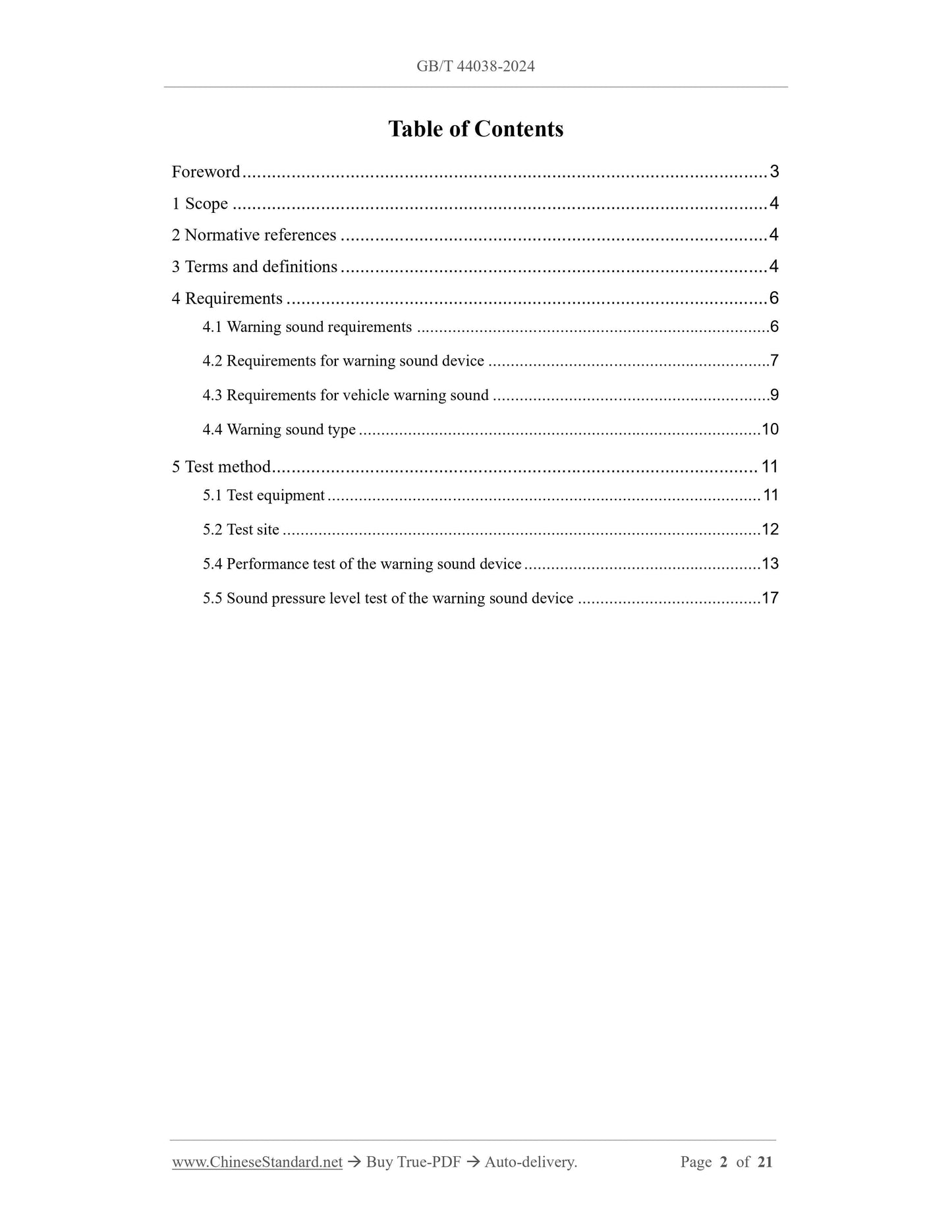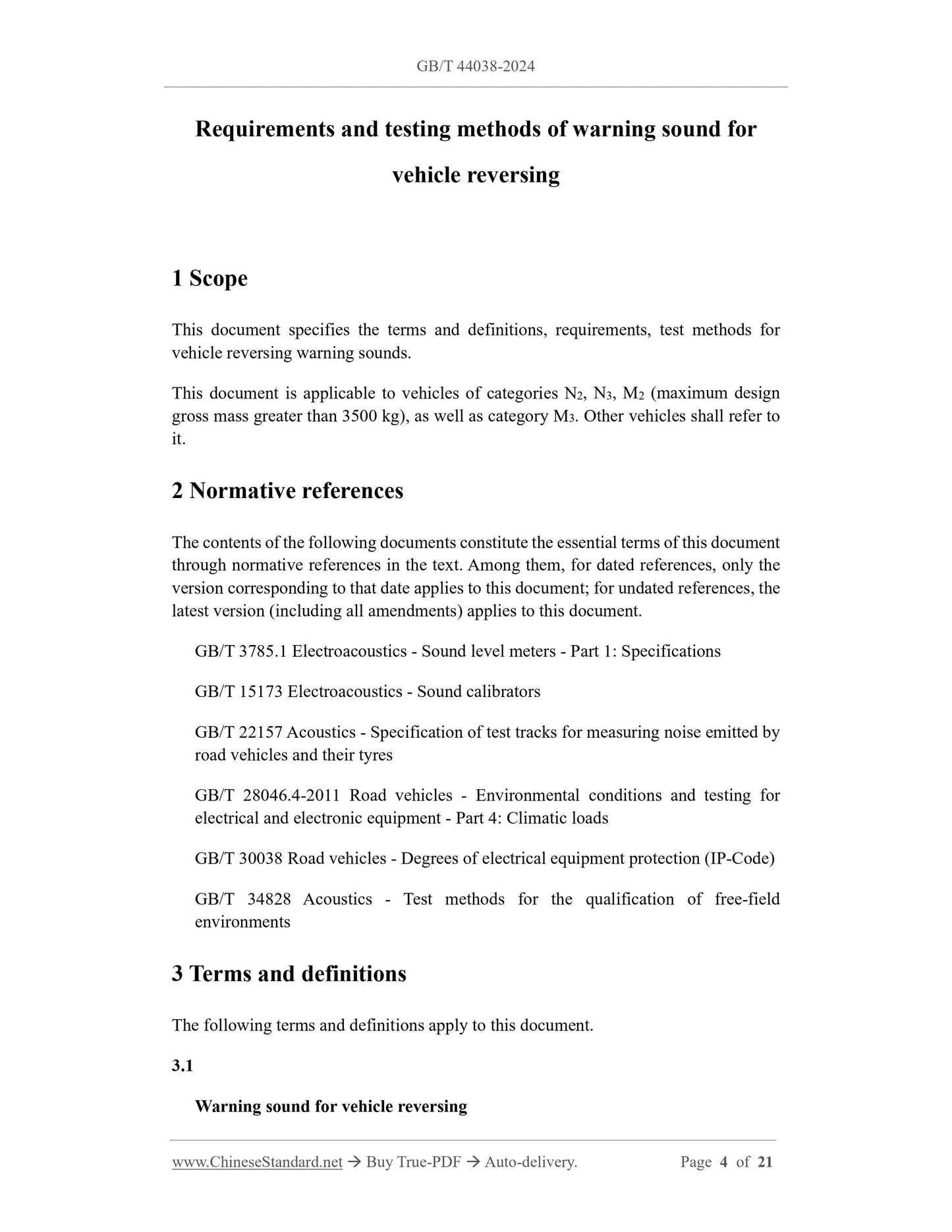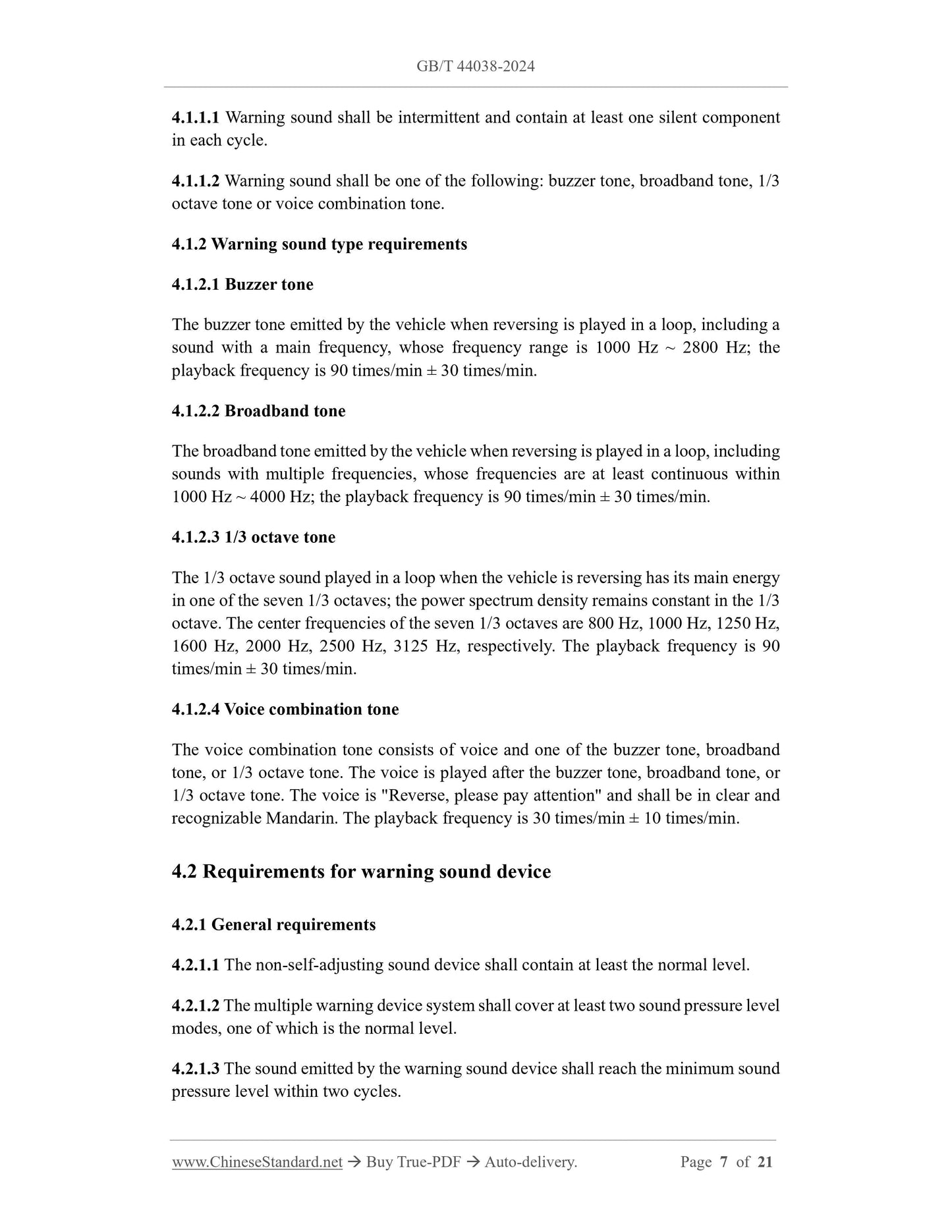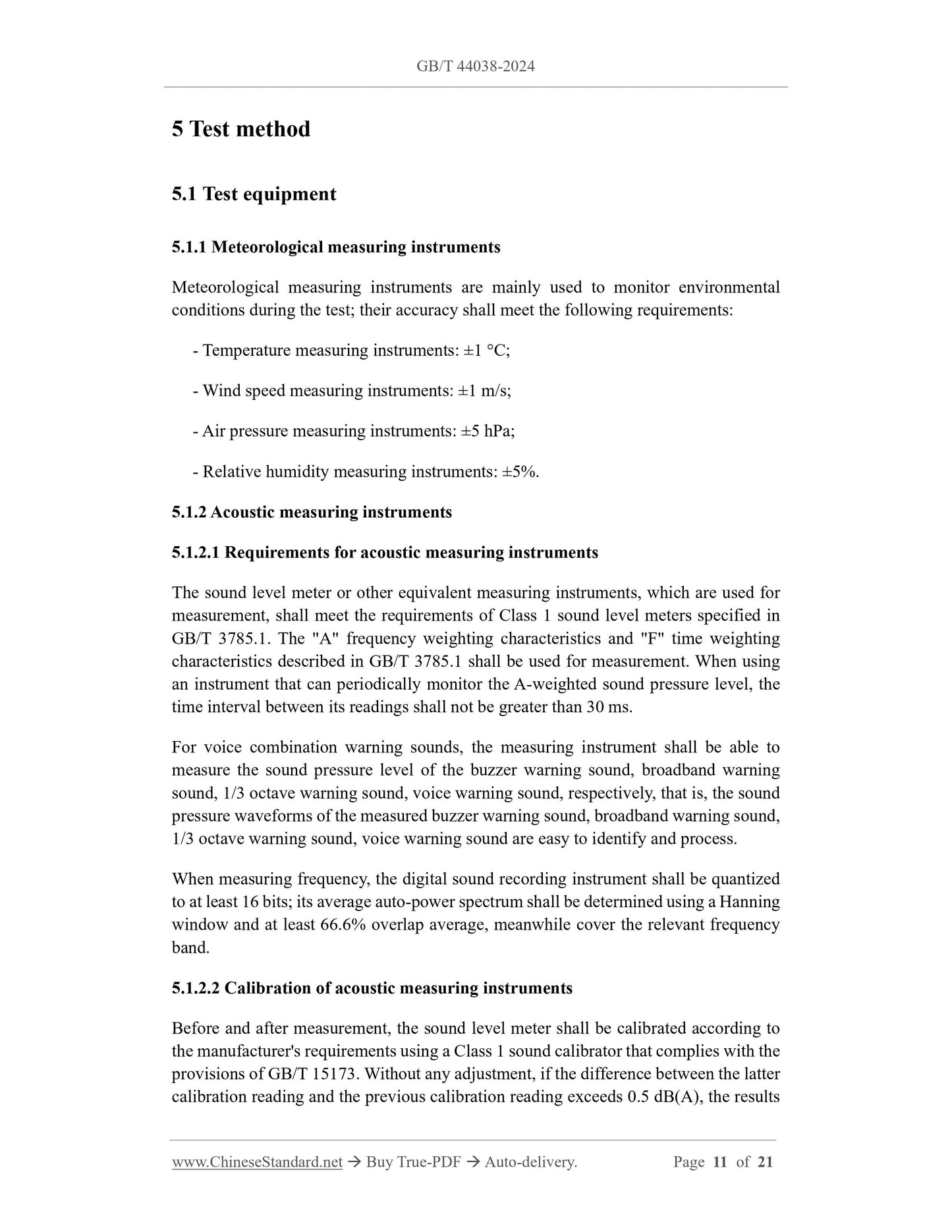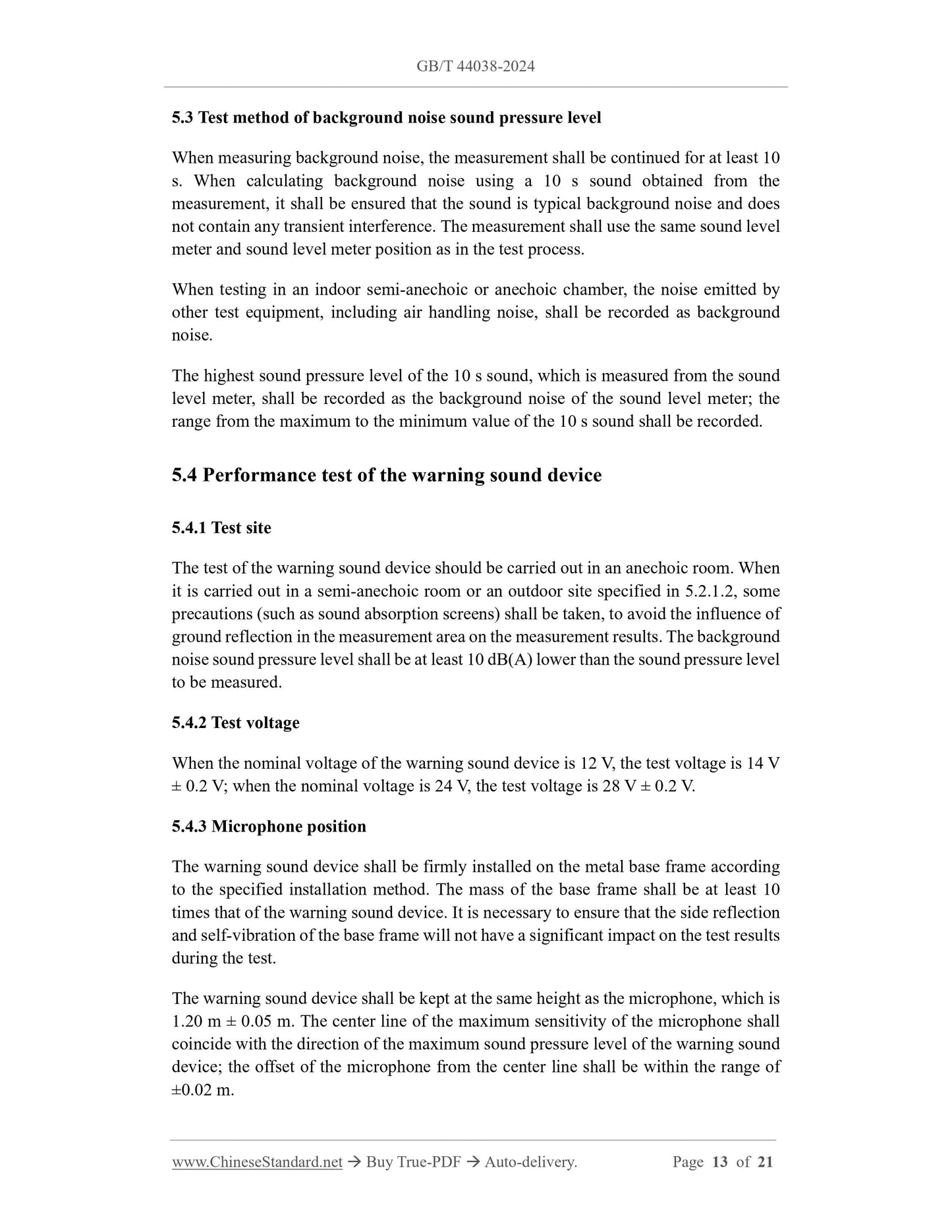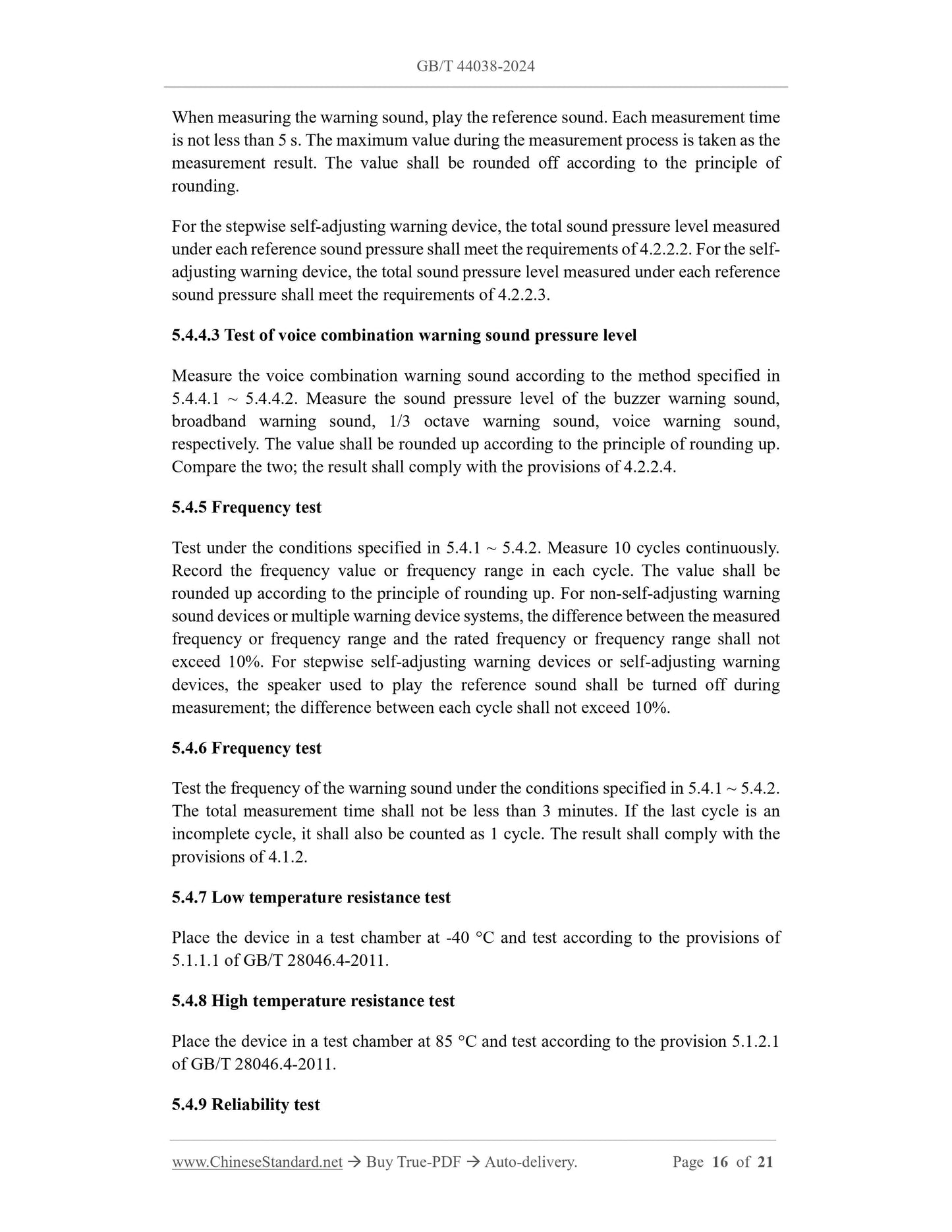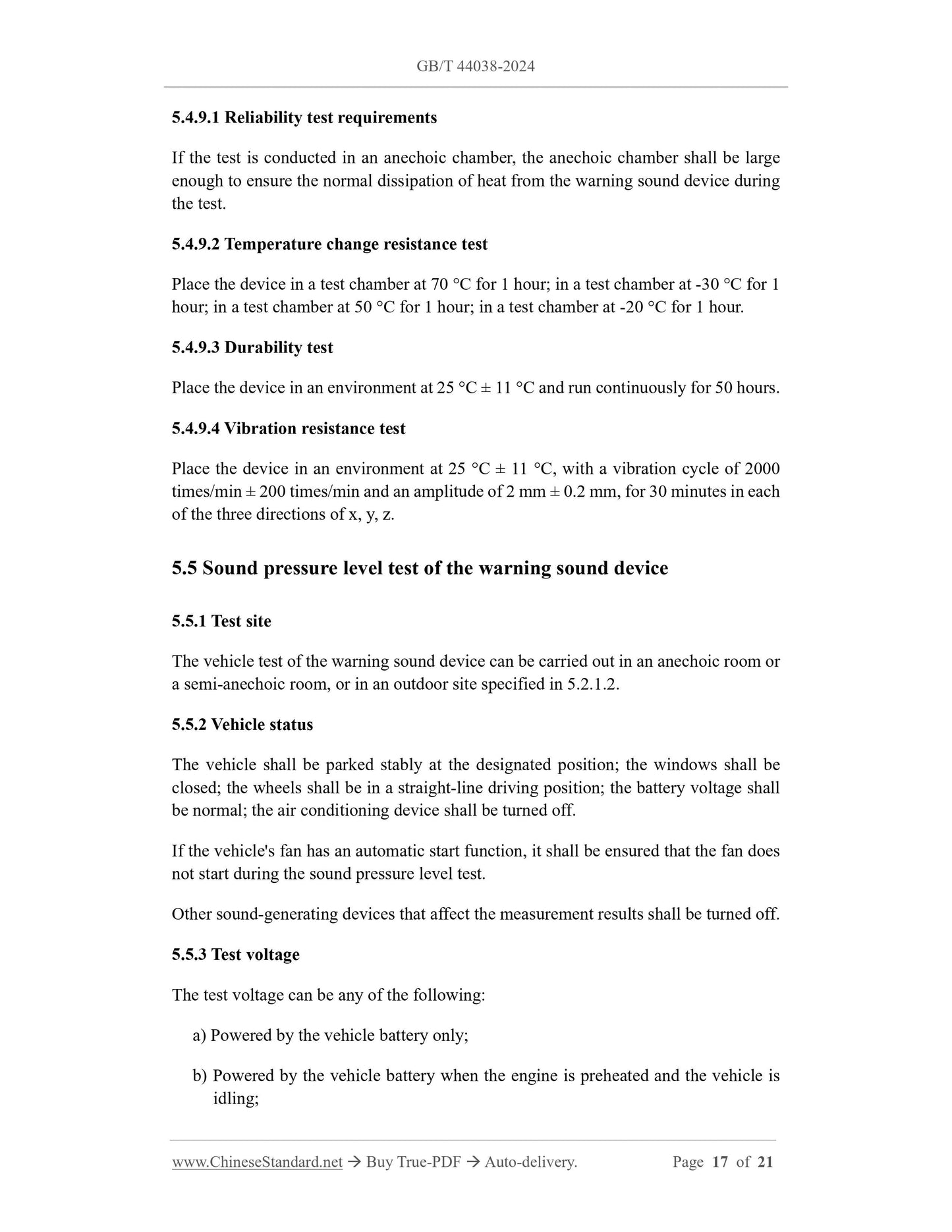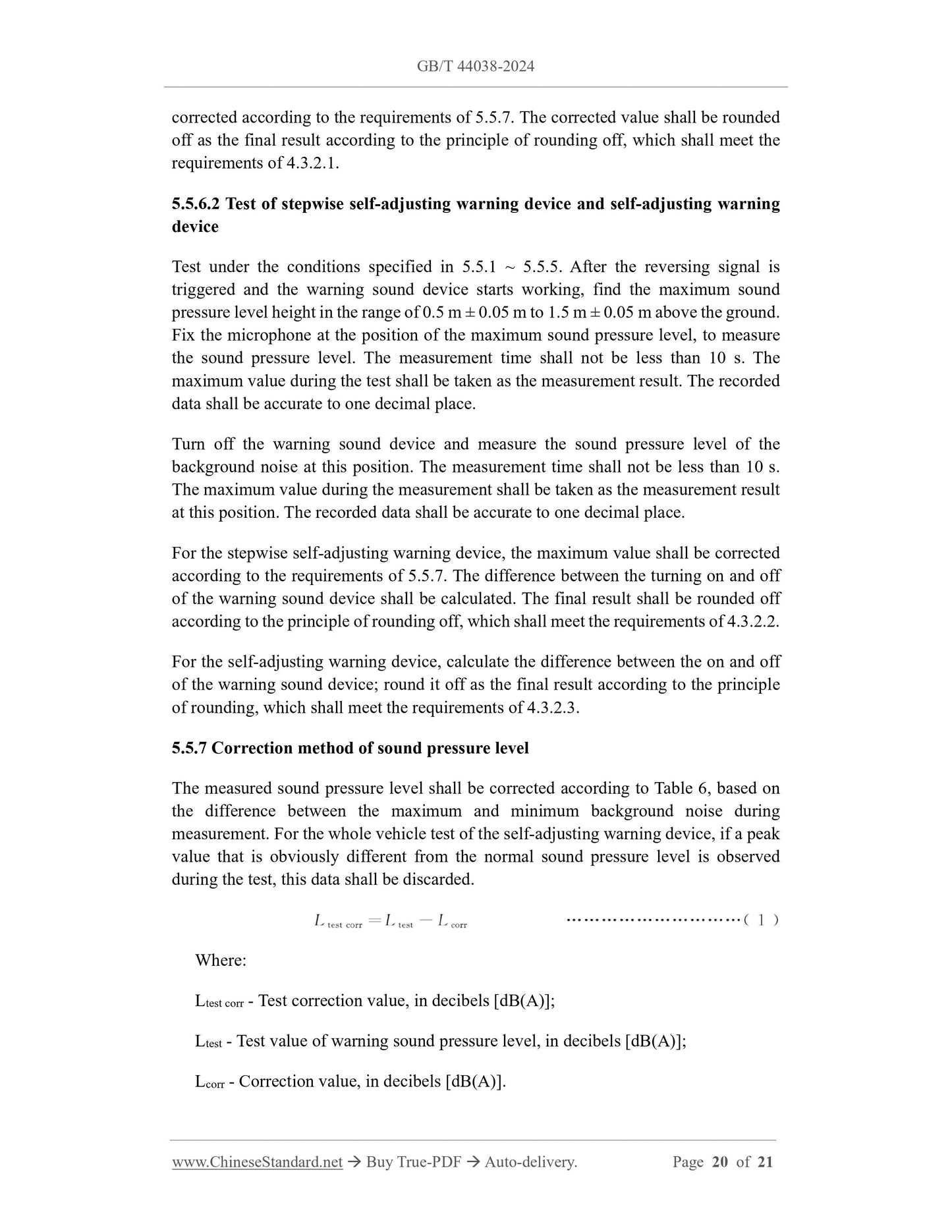1
/
of
10
www.ChineseStandard.us -- Field Test Asia Pte. Ltd.
GB/T 44038-2024 English PDF (GB/T44038-2024)
GB/T 44038-2024 English PDF (GB/T44038-2024)
Regular price
$290.00
Regular price
Sale price
$290.00
Unit price
/
per
Shipping calculated at checkout.
Couldn't load pickup availability
GB/T 44038-2024: Requirements and testing methods of warning sound for vehicle reversing
Delivery: 9 seconds. Download (and Email) true-PDF + Invoice.Get Quotation: Click GB/T 44038-2024 (Self-service in 1-minute)
Newer / historical versions: GB/T 44038-2024
Preview True-PDF
Scope
This document specifies the terms and definitions, requirements, test methods forvehicle reversing warning sounds.
This document is applicable to vehicles of categories N2, N3, M2 (maximum design
gross mass greater than 3500 kg), as well as category M3. Other vehicles shall refer to
it.
Basic Data
| Standard ID | GB/T 44038-2024 (GB/T44038-2024) |
| Description (Translated English) | Requirements and testing methods of warning sound for vehicle reversing |
| Sector / Industry | National Standard (Recommended) |
| Classification of Chinese Standard | T09 |
| Classification of International Standard | 43.040 |
| Word Count Estimation | 18,126 |
| Date of Issue | 2024-05-28 |
| Date of Implementation | 2025-01-01 |
| Issuing agency(ies) | State Administration for Market Regulation, China National Standardization Administration |
Share
